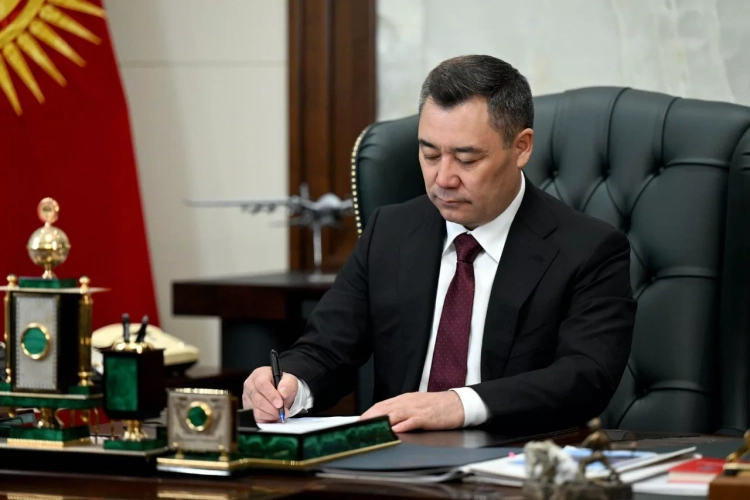Administration and Territory of the City
GEOGRAPHICAL LOCATION
Kara-Balta is one of the youngest cities in the Kyrgyz Republic, comfortably located at the foot of the northern slope of Ala-Too, in the center of the western part of the Chui Valley, 62 km from the capital of the Kyrgyz Republic - the city of Bishkek, at an altitude of 700-750 meters above sea level, on the left bank of the Kara-Balta River in the Chu River basin.
Kara-Balta is one of the largest transport hubs in the Chui region: it is crossed from west to east by the Tashkent-Taraz-Bishkek-Balykchy railway line and the Tashkent-Bishkek-Almaty highway, which have interstate significance. The Bishkek-Osh and Kara-Balta-Suusamyr-Minkush highways, which run along the right bank of the Kara-Balta River, are of great importance for the socio-economic development of the area.
The city's hydrographic network is represented by the Kara-Balta River, which borders the city from the east for 7 kilometers and originates from the glaciers of the mountains at the confluence of the mountain streams Ablah, Kol, and Tuyuk. The total length of the river is 133 km, its basin area is 577 km², and the average water flow is 5.25 m³/s, fed by snow and glaciers. In the city area, the bed of the Kara-Balta River is dry, as a watershed with drainage irrigation canals has been arranged in the upper zone at the river's exit from the mountain gorge, one of which runs through the city. The riverbed and floodplain are used for quarrying activities.
The city is immersed in greenery: majestic pines line the main street of the city - Gruda Avenue, there are two perennial parks, and forest plantings along all the highways. On the eve of the city's 25th anniversary, the residents of Kara-Balta planted about 27,000 fruit and decorative trees.
ADMINISTRATIVE-TERRITORIAL DIVISION
Kara-Balta was granted city status on September 9, 1975, by the Decree of the Presidium of the Supreme Soviet of the Kyrgyz SSR, and the lands were allocated according to the Resolution of the Council of Ministers of the Kyrgyz SSR dated February 16, 1976.
The territory of the city includes 3,152 hectares: 262 hectares from the urban-type settlement of Kosh-Tegirmen, 375 hectares from the urban-type settlement of Kara-Balta, 105 hectares from the district center of the village of Kalininsky, 260 hectares from the collective farm "Sickle and Hammer," 10 hectares from the livestock fattening state farm, 162 hectares from the Lenin collective farm, 17 hectares from the Ilyich collective farm, and 1,961 hectares of industrial and other institutions.
In 1988, the city expanded its borders by separating 55 hectares from the village of Alekseevka towards the mountains for the construction of housing for residents. The length of the urban area is 4.8 km wide and 7.3 km long.
ADMINISTRATIVE BODIES
In accordance with the Decree of the Presidium of the Supreme Soviet of the Kyrgyz SSR dated September 9, 1975, on the establishment of the city of Kara-Balta, an organizing committee was formed in September 1975 to create an executive authority - the city executive committee, headed by Comrade Rakhmanov T. R. Deputies were elected to the city council of workers' deputies.
At different times, the city executive committee and its council were headed by Malabekov M.N., Gogaev B.H., Kazakbaev Zh.P., Ibragimov M.T., and Syidanov K.S.
In April 1992, the city was granted the status of a district-subordinate city. Due to the reorganization of the administrative bodies, Kara-Balta was merged with the Kalininsky district, which was renamed Jayilsky a year later. The Jayil District State Administration was formed, headed by Rakhmanov Tologon Rakhmanovich, then by Syidanov Kubanychbek Syidanovich, and currently, the head of the Jayil District State Administration is Nazarov Bolot Nazarovich.
The city retained its city council, which was chaired by Dzekshenaliev K.D. from 1991 to 1999.
In 1998, according to the Decree of the President of the Kyrgyz Republic dated June 23, 1998, "On the Organization of Local Self-Government in District-Subordinate Cities," an executive and administrative body was established in the city, namely, the Kara-Balta City Administration. The first head of the city was appointed Tolokoncev V.G.
In March 2000, Tolokoncev V.G. was elected as a deputy of the Jogorku Kenesh of the KR, and Tishchenko Stanislav Nikolaevich was appointed as the head of the city of Kara-Balta.
Kara-Balta and Its Predecessor











































